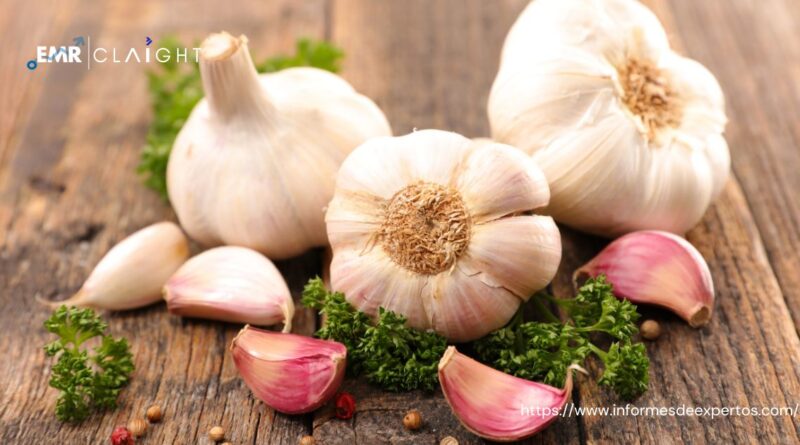Garlic Market: Trends, Production, and Future Outlook
Garlic (Allium sativum) is a widely used flavoring and seasoning agent known for its distinctive taste and aroma, which has been cultivated for thousands of years. A member of the onion family, Alliaceae, garlic is native to Central Asia and northeastern Iran, and has long been a staple in the Mediterranean region, as well as a frequent seasoning in Asia, Africa, and Europe. Beyond its culinary uses, garlic is also noted for its health benefits, including its anti-inflammatory, antibacterial, and cholesterol-lowering properties. This combination of factors contributes to its substantial role in the global spice market.
Production
China is by far the largest producer of garlic, accounting for approximately 80% of the world’s supply. Other major producers include India, South Korea, Egypt, and Russia. In the United States, California produces the majority of the nation’s garlic, with smaller amounts coming from Oregon, Nevada, and Arizona.
Garlic is primarily grown for its bulbs, which are used fresh or processed into various forms such as dried flakes, powder, or as an oil and extract. The garlic market can be segmented based on product type, into hardneck and softneck garlic. Softneck garlic is more commonly grown and is favored for its longer shelf life and milder flavor. Hardneck garlic, with its richer flavor, is typically more favored by chefs and gourmets.
Market Overview
The global garlic market is influenced by several factors including dietary trends, health consciousness, and culinary habits. The market is also affected by seasonal production cycles, with varying harvest times affecting availability and pricing.
- Supply Chain – The garlic supply chain involves numerous steps from field to market: cultivation, harvesting, processing, packaging, distribution, and retail. Each stage of the supply chain is crucial for maintaining the quality and integrity of the product.
- Pricing Dynamics – Garlic prices are volatile and can fluctuate widely due to several factors such as seasonal production, demand cycles, and economic conditions in producing countries. Trade policies and import tariffs also significantly impact global pricing structures.
- Consumption Patterns – Garlic consumption is highest in regions where it is a traditional ingredient in local cuisine, such as in Asia, the Mediterranean, and Europe. The rising popularity of ethnic cuisines, particularly in North America and Europe, has led to increased consumption. Additionally, the growing awareness of its health benefits has spurred its use as a dietary supplement.
Market Trends and Dynamics
- Health Trends – There is increasing research supporting the health benefits of garlic, particularly its impact on heart health and immune function. This has led to a rise in the use of garlic in nutraceuticals and dietary supplements.
- Organic and Sustainable Production – The demand for organic garlic is rising, driven by the broader global trend towards organic and sustainably produced food products. Consumers are increasingly willing to pay a premium for products that are perceived as healthier and more environmentally friendly.
- Technological Advancements – Advancements in agricultural practices and food processing technology have improved the efficiency of garlic production. Innovations in storage and logistics have also helped in maintaining the quality of garlic post-harvest, reducing waste, and extending the global reach of suppliers.
Market Opportunities
Expanding Global Cuisine
The growing popularity of global cuisines is continually introducing garlic to new markets. As consumers become more adventurous in their eating habits, demand for authentic, flavor-rich ingredients like garlic is expected to rise.
Health and Wellness
The health and wellness trend remains a powerful driver for the garlic market, particularly in segments like supplements where garlic’s health benefits are marketed directly to health-conscious consumers. Products like aged garlic extract, which is reputed to have enhanced health benefits, are gaining popularity in these sectors.
Vertical Farming
Emerging agricultural practices such as vertical farming offer opportunities for urban garlic production, reducing transportation costs and providing consumers with fresher products. This practice can be particularly effective in densely populated urban areas where traditional farming space is limited.
Future Outlook
The garlic market is expected to continue growing, driven by expanding culinary uses, health trends, and international cuisine’s global popularity. Challenges such as climate change, water scarcity, and land availability may affect production, requiring innovations in farming practices to ensure sustainability.
Strategic insights for stakeholders in the garlic industry include adapting to changing consumer preferences, investing in sustainable and organic farming practices, and leveraging technology to enhance production and distribution efficiencies. As the market evolves, those within the garlic industry will need to navigate both the opportunities and challenges that come with a globally demanded and culturally significant product.

